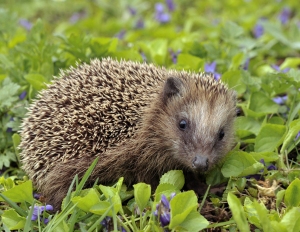Hibernation is part of the annual cycle for many animals in winter. Cold weather is difficult to survive in for some creatures, especially when it kills off the plants and animals they feed on. A hibernating creature goes into a deep sleep. Its temperature drops and its heartbeat and breathing slow down. This enables it to use up less energy, which is very important when there’s less food available. Different animals hibernate in different ways:
Hedgehogs – during summer, a hedgehog will eat lots to build up its fat stores in time for hibernation. This lasts from October/November to March/April. During this period their activity is so minimal that they can survive for months on this fat.
 Polar bears – only pregnant polar bears hibernate. The other females and males remain active in the harsh conditions of the Arctic winter. Like the hedgehog, the hibernating polar bear will feed heavily in the late summer so that they can live off fat reserves. But unlike the hedgehog, she does not enter a sleep-like state. She has to remain awake for pregnancy, birth and in order to nurse her cubs. Look at this video of polar bear cubs emerging in the spring.
Polar bears – only pregnant polar bears hibernate. The other females and males remain active in the harsh conditions of the Arctic winter. Like the hedgehog, the hibernating polar bear will feed heavily in the late summer so that they can live off fat reserves. But unlike the hedgehog, she does not enter a sleep-like state. She has to remain awake for pregnancy, birth and in order to nurse her cubs. Look at this video of polar bear cubs emerging in the spring.
Garter snakes – unlike the hedgehog and the polar bear, garter snakes in Canada hibernate in large groups. Rather than remaining warm by building up fat, they gather together in their hundreds or even thousands – not a site for anyone afraid of snakes! When the snow melts in the spring, the garter snakes emerge in their droves to bask in the sun.
